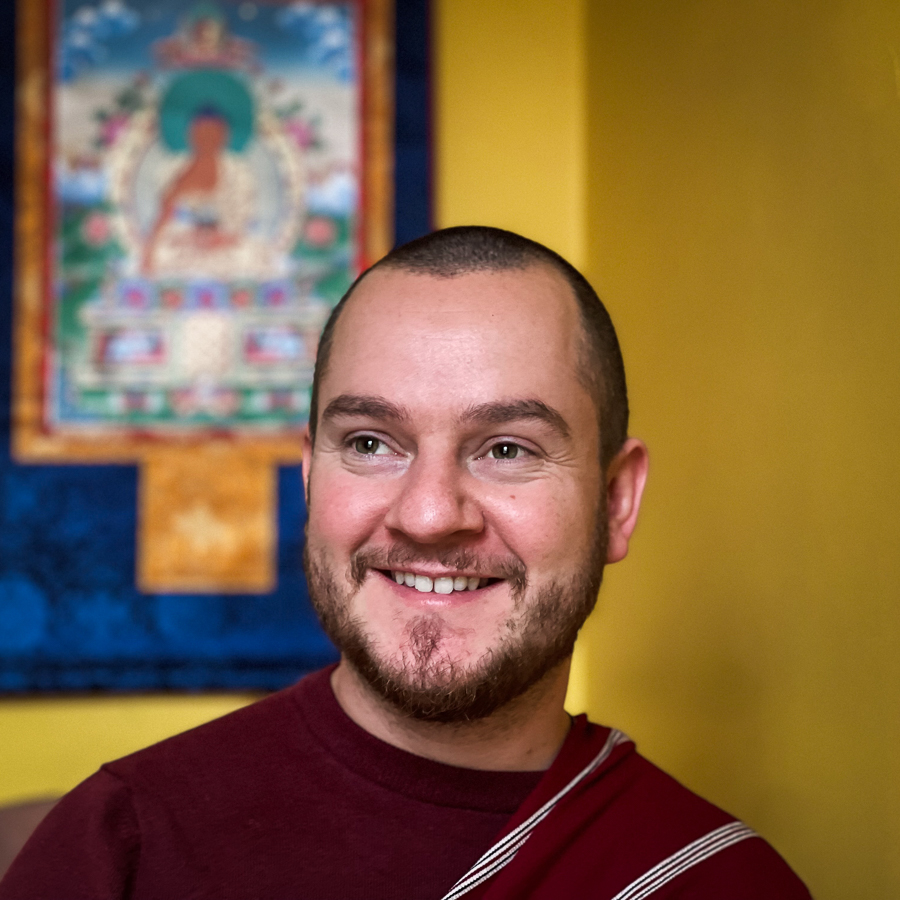Tips for a Successful Meditation Retreat at Home
Engaging in a meditation retreat is a great way to deepen your practice, take some time out, and cultivate inner wellbeing and calm. Unfortunately, it is not always possible to attend a retreat in person, whether due to finances, work, personal commitments, or other reasons. However, this doesn’t mean we can’t do a retreat at all – it may be possible to do a retreat at home.
Over the years I’ve spent several periods in retreat at home, both as part of organised online retreats and personal retreats following my own schedule.
If you have a connection with a meditation teacher or spiritual mentor, the best piece of advice I can give you is firstly to ask for their advice. They are likely to know where you’re at in your practice and can give you some personal advice on what to focus on, how to structure your day, and recommend any complementary or preliminary practices they feel would benefit you.
To go alongside this personal advice, I’ve laid out some generic tips here on how to set yourself up for success when planning a meditation retreat at home, which might save you some time and difficulty.
Have a clear intention
Before you start your retreat, it is important that you have a clear intention for why you’re spending time in retreat. This could be anything from making some progress in shamatha, deepening your understanding of the teachings, cultivating the Four Immeasurables or Bodhicitta, or simply finding inner peace and clarity. Having a clear intention will help you stay focused on that practice and motivated during the retreat. Without a clear intention, it can be easy to flit from one thing to another over and over and find you don’t make much progress in any one practice.
It’s important, however, that your intention is simply that, an intention, an expression of your aspirations and motivations, and not a fixed goal or expectation. I.e. ‘making some progress in shamatha’ vs ‘achieving shamatha in one week’ – one of these leaves you open to disappointment and frustration. Release the expectation of progress looking a certain way, there will be days that seem to move leaps, and days that seem to go backwards. Your intention should be a positive motivation that keeps you enthusiastic, not an expression of attachment that expects everything to happen the way you want it to.
Find a quiet, comfortable space
It is important to find a quiet, comfortable space for your retreat where you can meditate and practice in peace. If you’re fortunate enough, this could be a self-contained space like a cabin or annexe, or a dedicated meditation room, or even a quiet corner of a bedroom. Just make sure to the best of your ability that the space is free from distractions and conducive to relaxation and concentration. If there are others sharing your home, let them know your intentions and what you need from them to keep this space conducive to your retreat.
Consider if you’re going to spend time in silence, which can be very helpful for you to be more contemplative and grounded between sessions, and see if this is possible in your home environment.
It is often recommended to spend some time cleaning this space and making it comfortable, and if you have confidence in practices like recitations, mantras or monlam, then there are practices you can do to cleanse and prepare a space for retreat.

Set a schedule, and then be happy breaking it
It is important to set a schedule for your retreat. This is something your teacher can help advise you with, but ultimately needs to be guided by you and where you’re at in your practice. A helpful piece of advice I was given is to allow yourself to be flexible with your schedule. That is, go ahead and set a schedule, and try your best to stick to it for the first few days or a week, and then adjust it based on what you’re noticing. If you found it was far too demanding, then pushing through rigidly will only make things more difficult. If, on the other hand, you found you had a lot of free time and you feel you could go further, then adding more sessions can be helpful.
Your schedule might include set times for meditation (this might include shamatha meditation, loving-kindness meditation, sitting and walking meditations), recitation or monlam, study, listening to teachings, and other activities such as movement practice. Having a set schedule and exercising a level of discipline will help you stay focused, know what is coming next, and avoid getting distracted.
Plan the length of your formal meditation sessions according to your ability, enthusiasm and freshness. A one hour meal in the supine position straight after a meal is not the best idea for even the best practitioners. Emphasise quality over quantity, it is far better to do many shorter meditations in which you focus well than to do a few long meditations in which you cultivate the habit of being lost in drowsiness or distraction.
If your retreat is longer, it can be helpful to have a day a week without any set schedule, dedicated to relaxation. This can help keep you focussed during the others days of the week.
Prepare for the best, but expect a potential adjustment period
With your space and your schedule prepared, you’re ready to begin your retreat. With enthusiasm, you throw yourself into your schedule diligently for a few days, and it all goes great until boredom, restlessness, loneliness or scatteredness enters. This doesn’t happen to everyone, and is more likely for longer retreats, but, if your body and mind are quite used to being on the go all the time, with phones and TV to entertain you, and people to talk to, there may be a period of adjustment (or withdrawal) as you go cold turkey on these. I personally found this to be heightened during at-home retreat vs at a retreat centre, as you’re in the same place where you have these habits.
If this happens, be at ease with it, and be open to learning how to be comfortable with being uncomfortable. This experience will come and go, and eventually pass. The main thing is you don’t throw in the towel at the first sign of discomfort.

Take care of your physical needs
You may be spending your time focusing on the mind and cultivating inner qualities, but it is still important to take care of your physical needs during a retreat, as this will help you feel more comfortable and focused.
Make sure to eat well (balanced diet, not too little, not too much), get enough sleep, and take breaks when you need them. Bring in movement practices such as Tai Chi, Qi Gong, Yoga, or walking meditation.
Keeping yourself rested and balanced physically and mentally will help ensure the retreat goes well and is a positive experience.
Seek support from teachers and spiritual friends
It can be helpful to have someone to turn to for support during your retreat. I recommend keeping in contact with your meditation teacher or spiritual mentor and asking for their advice if uncertainty arises, they are here to guide you on your inner expedition and save you time. If you have a community of admirable friends who are also interested in Buddhism and meditation, it can be helpful to reach out and discuss your experiences with them also from time to time.
By following these tips, you can have a meaningful and rewarding meditation retreat even at home. Remember to have loving-kindness for yourself, and don’t be too hard on yourself if you at times find it challenging. The most important thing is to do your best and cultivate self-awareness and an open, curious mind.




